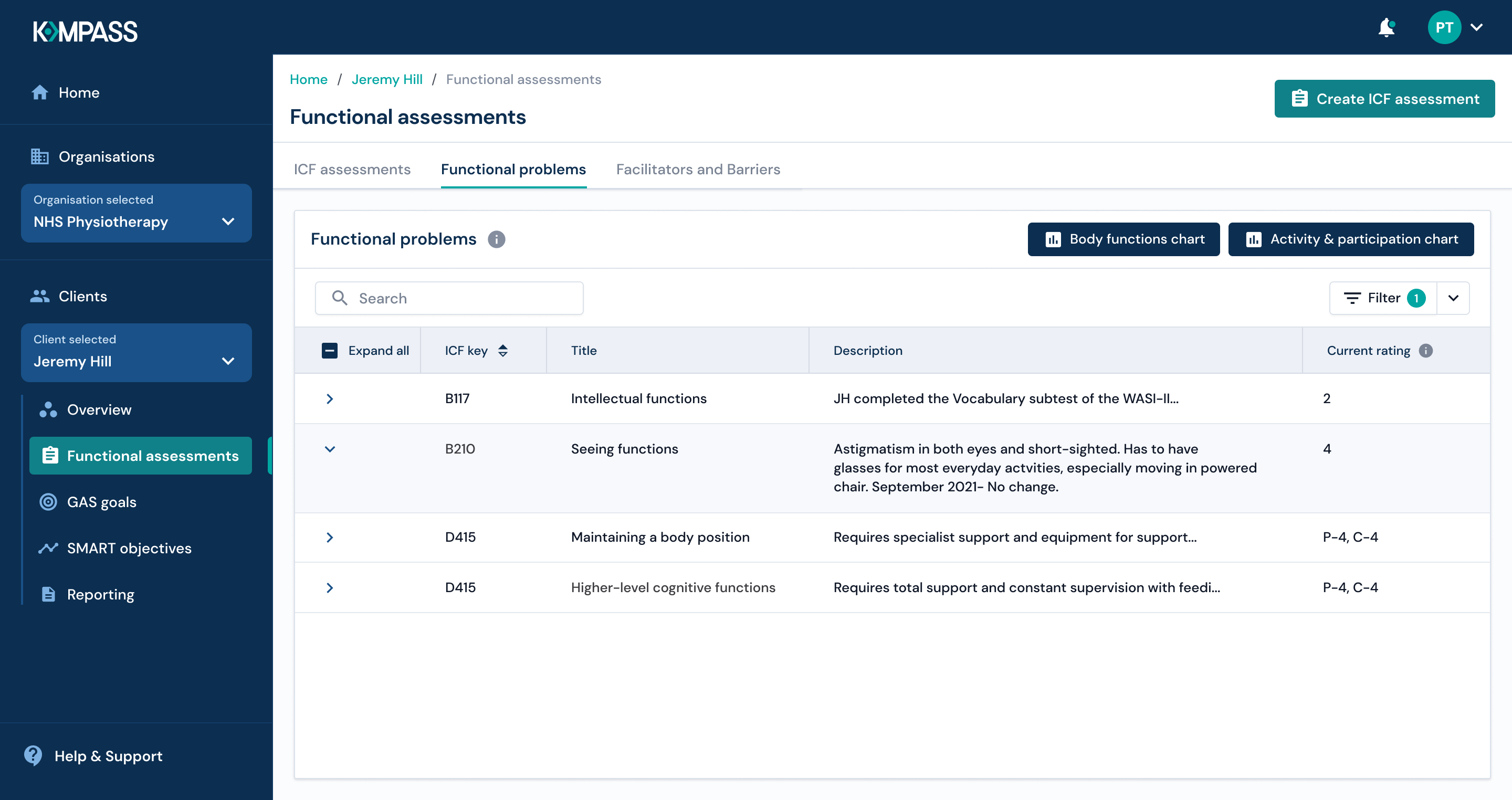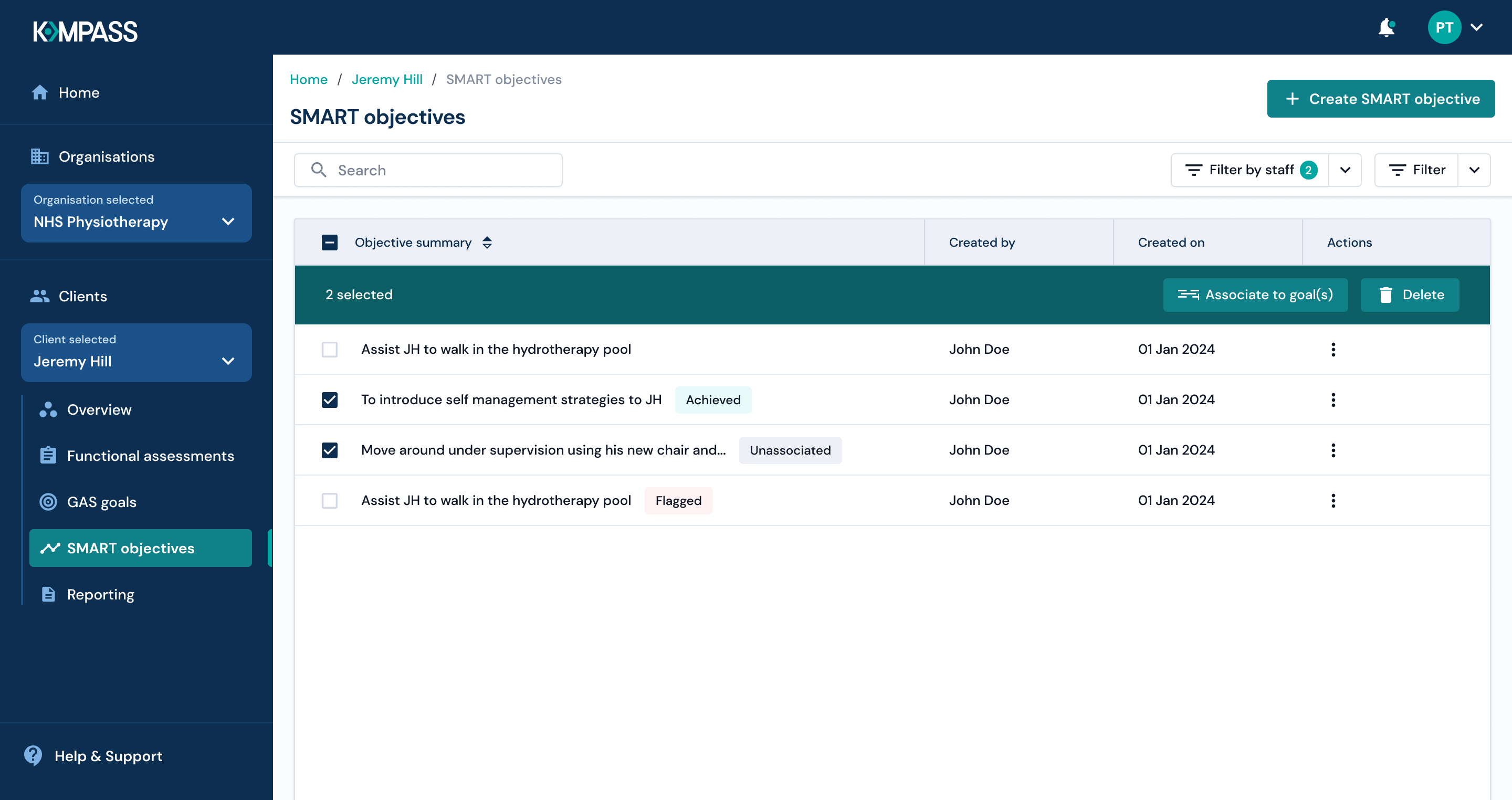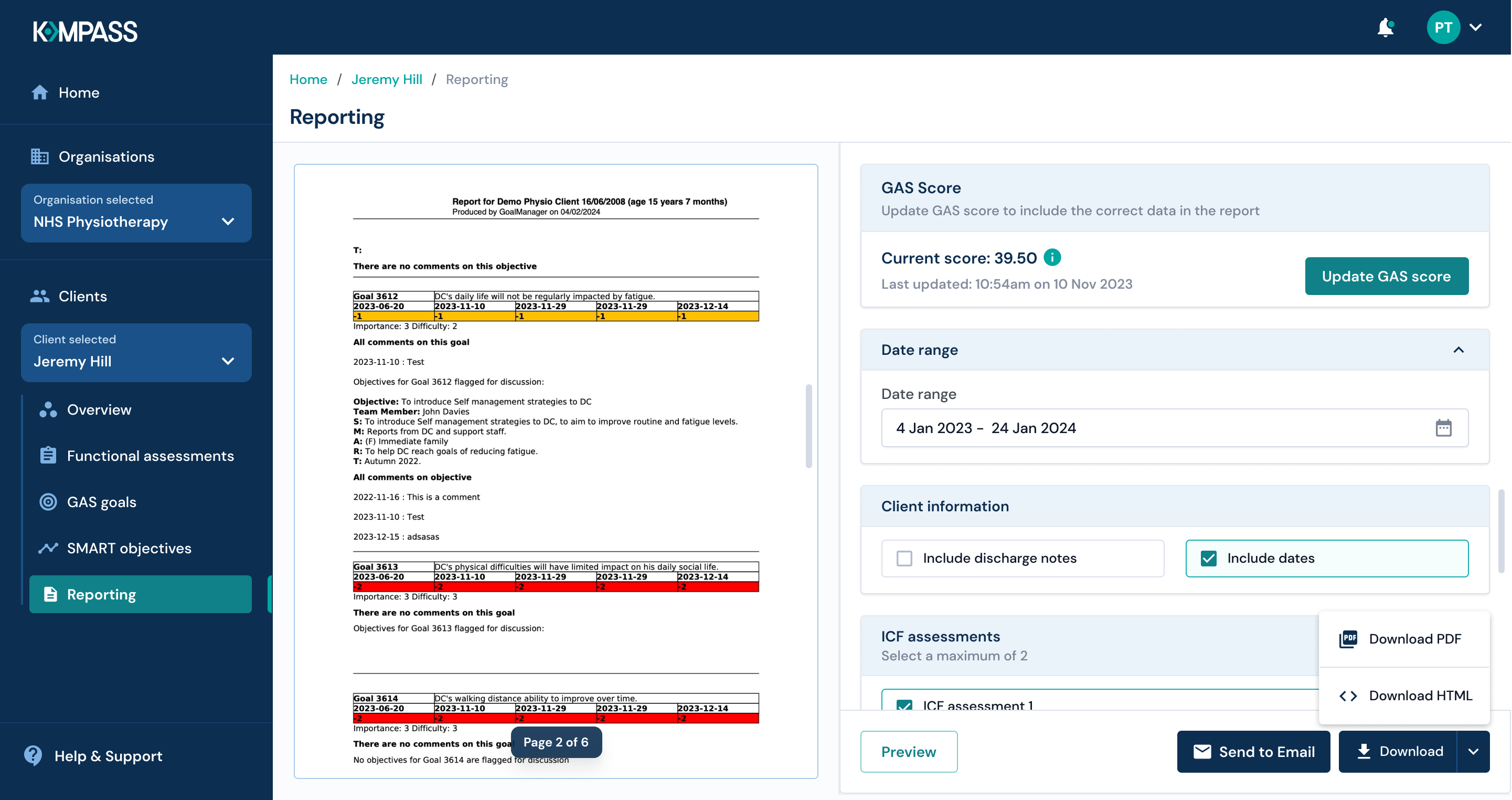The rehabilitation process
The four steps below guide the rehabilitation process from initial assessment through to reporting, using evidence-based frameworks to provide gold-standard rehabilitation practice. These steps ensure that rehabilitation is holistic, purposeful, and tailored to the unique needs of each patient, fostering engagement and sustained progress. Click on each framework for more information.

Functional assessments
Functional assessment provides a comprehensive understanding of a patient's abilities, limitations, and environmental influences, forming the foundation for identifying specific functional problems. These problems highlight the key areas requiring intervention and inform the creation of patient-centred goals that are meaningful, achievable, and aligned with the individual's priorities.

Goal setting
Goal setting provides a structured framework to guide the rehabilitation process, while objective setting translates these overarching goals into actionable, manageable steps.

Objective setting
Objectives not only help patients focus on incremental progress but also enable interdisciplinary teams to work collaboratively, addressing different aspects of the same goal.

Reporting
Reporting is a vital component of the rehabilitation process, providing detailed and structured information on a client’s progress, challenges, and achievements. It serves as a central tool for inter-disciplinary team (IDT) meetings and discussions, ensuring that all team members are aligned and informed about the client’s status and the steps needed for ongoing intervention.